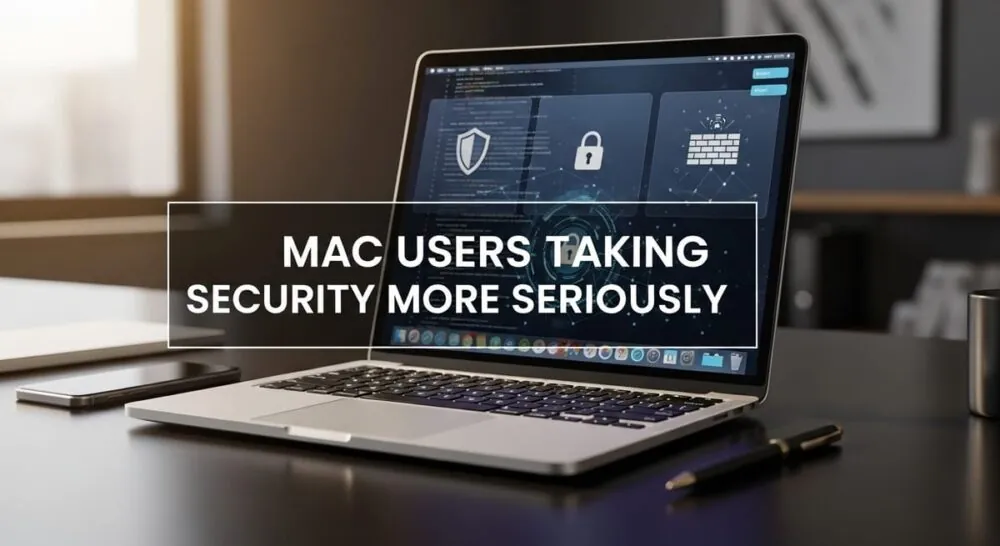Many people hang on to their MacBooks for years, often far beyond the point when the hardware or software is truly meeting their needs. Apple laptops are famously durable, and older macOS versions remain stable and usable long after release. But eventually, even the most reliable machine begins to show signs that it’s no longer keeping pace with your daily workflow. Knowing when to transition to something newer—without upgrading prematurely—can save both frustration and money.
The first signs usually appear in subtle ways: longer startup times, fans spinning loudly during simple tasks, or apps taking noticeably longer to launch. Over time, these inconveniences become part of your routine, and you start working around them without noticing how much inefficiency they add. Compatibility issues follow. Modern browsers begin dropping support for older macOS versions, cloud services warn you that your OS is no longer “optimised,” and certain apps simply refuse to update. This rarely happens overnight; it creeps in slowly, until one day a website won’t load properly or a video call starts stuttering because the CPU is maxed out at idle.
Some users explore temporary fixes—fresh installations, battery replacements, or reducing background apps—but these only go so far. Around the midpoint of this decline, many people consider whether a refurbished MacBook might provide a smoother, more modern experience without committing to a brand-new model. This is often a sensible middle-ground: you gain improved performance, better battery life, and access to newer macOS versions, all while spending far less than the cost of buying current-generation hardware.
Balancing performance needs with realistic expectations

Source: appleinsider.com
Growing demands in daily work often reveal limits that routine maintenance can no longer overcome. When workflows shift into heavier categories such as video editing, 3D work, high-volume data processing or advanced design tools, older CPUs and GPUs begin to struggle. Modern software expects far more power than machines built several generations ago can deliver.
Even simple multitasking may start to lag as apps consume more resources than earlier hardware can supply.
Security concerns reinforce that point. Older macOS versions eventually stop receiving crucial fixes, leaving open doors that no setting adjustment can close. Anyone dealing with confidential documents, client projects, financial records or internal communications faces increased risk once support ends.
Temporary measures like cautious browsing or offline habits provide partial relief, yet they cannot compensate indefinitely for unsupported software.
Signs that heavier workloads exceed your current machine
Growing workloads eventually reveal limitations that routine optimisation cannot hide. Older processors, modest graphics capabilities and restricted memory all begin to struggle when faced with modern demands.
As software becomes more complex, resource requirements rise, and older hardware finds it increasingly difficult to keep up.
What once felt smooth may start to feel sluggish, even during tasks that were previously effortless.
Once heavier projects become part of your routine, such as long editing sessions, complex design work, large spreadsheets or multi-layer compositions, strain becomes easy to spot.
A few indicators commonly appear together and highlight that your machine is reaching its practical ceiling:
- Slow app launches once multiple programs are open
- Frequent thermal spikes during moderate tasks
- Noticeable delays during exports, previews or render steps
- Reduced responsiveness during everyday multitasking
More demanding work exposes every weakness. Heat rises faster, battery drains quickly and fan noise becomes a near-constant companion. Even simple actions such as switching apps, opening tabs or loading files may start to feel heavier than they should. At this stage, the device often requires frequent force-quits or restarts just to regain temporary stability.
Knowing when replacement becomes more cost-effective
Long-term ownership eventually reaches a point where continued repairs no longer offer practical value. Ageing components wear down, and fixing one issue often reveals another. Expense accumulates faster than expected when you need several interventions within a short period.
Investing in a new battery, replacing a keyboard, addressing board-level failures or upgrading storage can quickly approach the cost of a newer device.
A smarter choice sometimes involves stepping up to a model only a few years newer. Many users experience a dramatic jump in speed, reliability and energy efficiency without paying the highest price on the market.
Slightly newer generations often support features that older units cannot handle, including faster ports, improved thermals and more stable performance under load.
Refurbished devices can extend budgets further while still offering strong durability and modern support.
Daily usage often becomes far more pleasant after such an upgrade. Reduced heat, quieter operation, faster app response and improved battery life contribute to a smoother experience overall. Workflows accelerate naturally, removing the pressure of constant micro-management.
Situations that should prompt a cost comparison
Several moments signal that it may be time to evaluate whether repairs still make sense:
- Repeated service visits for recurring hardware faults
- Repair estimates approaching a substantial percentage of a modern replacement
- Inability to run newer apps needed for work or studies
- Noticeable slowdown even after fresh installations and optimisation
If you want, I can expand each point individually, adjust for a more analytical tone, or adapt the content for a buying guide or technical document.
Recognising when your device is holding you back
Upgrading often feels unnecessary at first, especially when a machine has served faithfully for years. Slowdowns usually appear gradually, making it easy to ignore early signs.
Real progress begins once you acknowledge that efficiency suffers more than the machine can compensate for.
As soon as compatibility diminishes, performance declines repeatedly or long-term security support ends, overall workflow becomes more stressful than productive.
Continued reliance on ageing hardware eventually forces you to change habits just to keep tasks running.
You might delay software updates, close apps constantly to free memory or avoid work that strains the system.
None of these adjustments offer lasting improvement. Momentum fades, deadlines feel tighter and even light workloads can become frustrating when each action takes longer than expected.
Daily routines undergo a noticeable shift once newer hardware enters your setup.
Faster startup times, smoother multitasking, extended battery endurance and stable temperatures all contribute to a far more comfortable experience.
Stronger security support ensures that sensitive material stays protected without relying on temporary workarounds. That upgrade often restores confidence, reduces stress and allows you to focus on work instead of fighting limitations.

Source:youtube.com
Clear moments that suggest moving forward makes sense
Some conditions naturally signal that an upgrade is no longer optional.
These points often arise together and create a clear picture that your device has reached its practical limit:
- Work requirements exceed available performance
- Regular apps stop receiving updates
- Critical software no longer installs properly
- Security patches are no longer issued for your macOS version

























